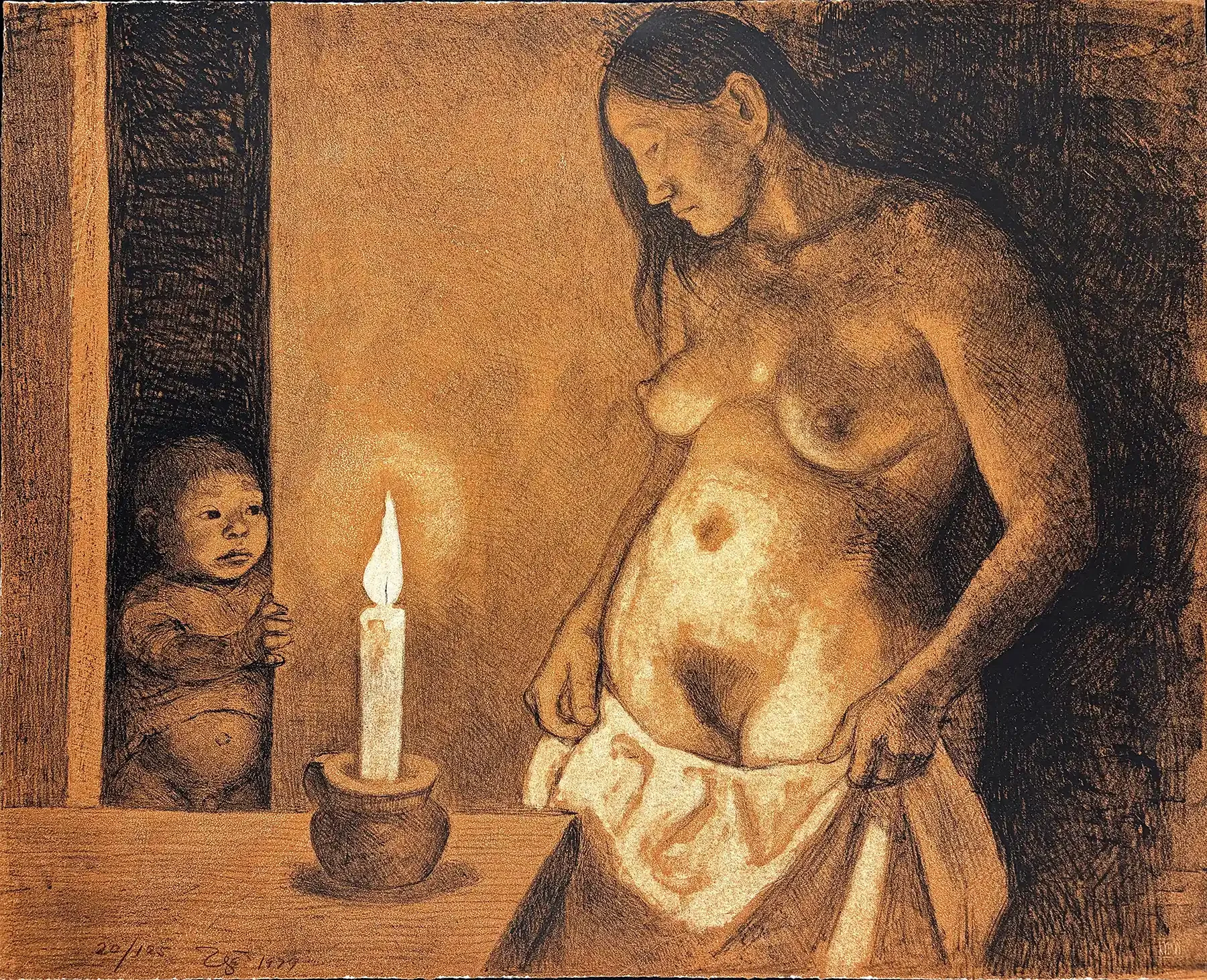Francisco Zúñiga - prints and biography
Francisco Zúñiga
Costa Rican–Mexican sculptor and printmaker
Francisco Zúñiga is recognized as one of the most important Latin American artists of the twentieth century, celebrated for his monumental sculptures and sensitive graphic works depicting women, families, and the timeless dignity of indigenous life. Born in San José, Costa Rica in 1912, Zúñiga studied drawing and modeling under his father, sculptor Manuel María Zúñiga. In 1936 he moved to Mexico, where he found his artistic home and joined the vibrant community of post-revolutionary modernists. Two years later he began teaching at the Escuela Nacional de Pintura, Escultura y Grabado “La Esmeralda,” where he would influence generations of Mexican artists.
Though best known as a sculptor, Zúñiga was also a master draftsman and printmaker. His lithographs and etchings explore the same themes that define his sculpture — the strength and grace of the female form, the quiet beauty of rural life, and the enduring spiritual connection between humanity and the earth. Working with leading workshops such as Kyron, Mexico City, and publishers including Brewster Editions, he produced a body of prints that combine classical structure with a deep humanism rooted in Mesoamerican tradition. His mastery of line and tone allows his figures to radiate a sculptural presence even on paper.
Zúñiga’s art has been exhibited internationally since the 1940s and is held in major collections including the Museum of Modern Art (New York), the Museo de Arte Moderno (Mexico City), the Hirshhorn Museum, and the Art Institute of Chicago. Throughout his long career he received numerous honors, including Mexico’s Premio Nacional de Artes in 1992. He continued working until his death in Mexico City in 1998.
Today, Francisco Zúñiga’s prints are sought by collectors for their warmth, technical precision, and profound humanity — a fusion of classical form and Mexican identity that makes him a central figure in modern Latin American art.

